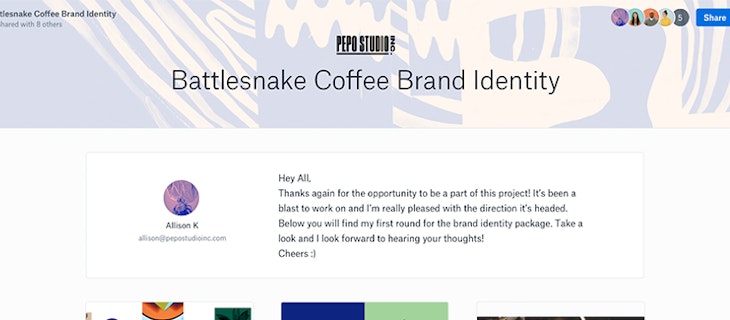
How to say no at work
You get a new email. Or maybe a notification from a messenger program. “Hey! How are you? Awesome. Can you help me out with a quick job,” your manager chirps as that void in your stomach starts to feel like a sinkhole. You’re picturing your to-do list and half of it is marked urgent.
“Um, yep! No worries,” you say. Maybe the quality won’t take a nosedive if I put some extra hours in, you think.
We’ve all done it at the office. Said “absolutely!” when everything—logic, instinct, your partner’s dinner plans—screams “please, no!” But that growing in-tray comes at a price. Over 65% of professionals see overwhelmed employees as a critical issue facing their organisations. And on a personal level, being overworked has been linked to a stack of health issues as overwhelming as your inbox—like diabetes, autoimmune illness and cardiovascular disease.
So if saying “no” at work is so important, why is it so hard? And how can you master this critical skill to focus on what actually matters?
There should be an ‘I’ in team
Putting in the hard yards can earn you extra points at work, but it turns out that ultimately people-pleasing doesn’t pay. According to research on collaborative overload, the most helpful, capable employees can become bottlenecks since they give time and energy to an increasing number of projects. Their “I-can-do everything” attitude yields missed deadlines and poorer-quality work.
The most effective workers strike a balance between self-interest and helping others. They practice what psychologists call differentiation, resisting external pressures and making thoughtful, independent decisions about which tasks to take on. The results: better relationships at work, greater job satisfaction, and less stress.
Could someone else handle it?
Sometimes we agree to take on more work than we’d like, worrying that refusing would leave someone in a rough spot, or we assume we’re the only one for the job. As a result, knowledge workers spend 41% of their time on tasks that could easily be handled by others.
Before responding to a request, one executive recommends you first “understand the ask“: clarify how urgent the request is, what alternate options exist, or how someone else might help. By ensuring the task is appropriately assigned, you end up boosting efficiency across the board.
Practice makes perfect
So how do you actually turn someone down? You can try scripting your responses ahead of time by predicting typical situations. Does your colleague over-delegate before going on a holiday? Is your client asking for work that wasn’t agreed upon? Write out a clear response to each situation and crosscheck it with a friend. Now sit back and taste the amazing dinner you’ll be eating at home because you’re not working late tonight.
5 great places to start
- Low-impact projects: You’ve likely heard of the 80/20 rule or Pareto Principal—the theory that 80% of results are generated by 20% of actions. This is the key to effectiveness: focus the majority of your time and energy on high-yield projects—and send everything else to the bottom of your to-do list. Remember, turning down low-impact projects isn’t self-serving or lazy. If you were hired to deliver results, then you’re getting paid to prioritise.
- The dreaded scope creep: Boundaries are your best friend, keeping you and your core projects from tumbling into a sea of additional requests. Set boundaries early, firmly, and clearly: Ambiguous project definition is one of the top five causes of scope creep. If the scope still expands, speak up. Often clients don’t know where to draw the line between necessary and nice-to-have.
- Constant comms: Is your phone or desktop ceaselessly pushing you notifications? From social media to email to IM programs, constant communication at work has become a time and energy vampire. According to one productivity study, professionals spend nearly 40% of their day receiving and managing information, versus actually putting information to use. Psychologists say even having your phone within your field of vision significantly impacts cognitive performance (a compelling argument to our bosses that sometimes we need to go off the grid). Try to limit checking your phone and email—you’ll be twitchy at first, but push through it—and an uninterrupted flow state will be your reward.
- Superfluous meetings: Most will admit that meetings can be an enthusiasm drainer and a time waster. According to nearly half of workers surveyed, “too many meetings” is the number one killer of productivity. If you’re looking to carve out time for high-priority work, gratuitous gatherings should be first on the chopping block. And don’t be afraid to ask organisers directly whether your attendance is necessary: often they’ve extended an invite out of a misplaced desire to be inclusive.
- Ill-timed opportunities: Whether it’s a coveted promotion or a cool creative project, big opportunities can be especially hard to turn down. But taking on a new role or responsibility without the time or resources to pull it off can be more embarrassing than rewarding. This should be your chance to shine—not to face-plant.
Start by separating the dream from reality. Is the timeline feasible? Are the demands achievable?
If you still feel like it’s a can’t-miss opportunity? Then start ruthlessly scanning your other commitments for things to cut. Before long, you’ll be an expert at saying “no” to the unnecessary, once again the master of your calendar and your career.


